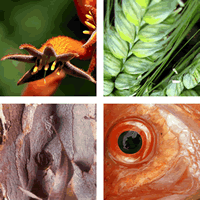Background to the survey
During August and September 2013, the Grains, Seeds and Hay IFS Management Committee undertook a survey of Scheme contributors to gauge the industry's views on skeleton weed as a priority biosecurity issue to be addressed through the IFS.
The key question to be answered was:
'What level of funding is the WA grains/seeds/hay industry willing to contribute toward a program to address skeleton weed?'
The survey was prompted by:
- advice that the IFS contribution rate would need to increase in order to continue the current Skeleton Weed Control Program
- anecdotal feedback from industry that skeleton weed was no longer a priority issue to be funded by industry.
Number of infested properties
Since 2001 the number of known properties infested with skeleton weed has grown from 620 to 935. There are also over 100 infestations in the metropolitan area. The total area known to be infested and undergoing treatment is less than 2000 hectares.
Indications from surveillance carried out on random properties are that the real number of infested properties is higher than this. Normal in-crop broadleaf weed control is likely to keep some infestations at undetectable levels. Currently 45 shires have infestations.
In spite of the Skeleton Weed Program, the number of infested properties has continued to grow since the beginning of the program in 1975. The annual increase varies and is affected by seasonal rainfall which impacts on the success of winter control and weed detection in summer.
The grower contribution rate
The rate of the per-tonne grower contribution has not increased since 2001. In fact, it was reduced from 35 cents in 2006/07 to its current level of 30 cents per tonne of grain.
Funding arrangements have changed under the Biosecurity and Agriculture Management Act 2007 whereby the scope of biosecurity threats managed using grower funds has been expanded. The Skeleton Weed Program and the Bedstraw Eradication Program are now both funded from within the existing fund pool at a rate of 30 cents per tonne of grain/seed, and 15 cents per tonne of hay.
The cost of the skeleton weed program is increasing
The growing number of skeleton weed infested properties, the requirement to fund the Bedstraw Eradication Program and general inflationary pressures are putting a strain on the Grains, Seeds and Hay Industry Funding Scheme account.
The 2013/14 operational budget for the Skeleton Weed Program is $3 420 000. This, when added to the cost of the Bedstraw Eradication Program, equates to a grain grower contribution to the fund of 37.2 cents per tonne based on a total grain harvest of 10 million tonnes.
The cost of broadacre control of skeleton weed has reduced significantly since 2002
Research shows that skeleton weed can be managed effectively in the crop rotation. The cost of control will vary depending on the extent of the infestation and the cropping sequence.
It is estimated that managing a light infestation of skeleton weed across a cereal cropping paddock would cost little more than general broadleaf weed control. Summer control would be required in some years in some areas. The cost of skeleton weed control has reduced significantly in recent years with the dramatic drop in the price of clopyralid which now sells for 20% of the 2002 price.
The biggest impact of skeleton weed infestation will occur in the non-cereal cropping phase, as research shows there can be some residual effects of chemicals used in the cereal phase.
The contribution rate needs to increase to 40 cents from 2014 to keep pace with the current operational requirements
If the current program were to continue with an annual increase of 5% to cover inflation and the growing number of infestations, the contribution rate would need to increase to 40 cents per tonne of grain/seed and 20 cents per tonne of hay from 2014. The 40 cent annual rate would be sufficient to provide funding for the next five years.

